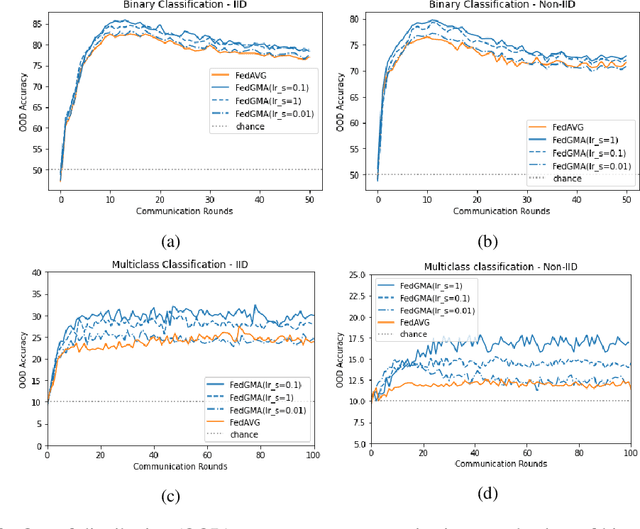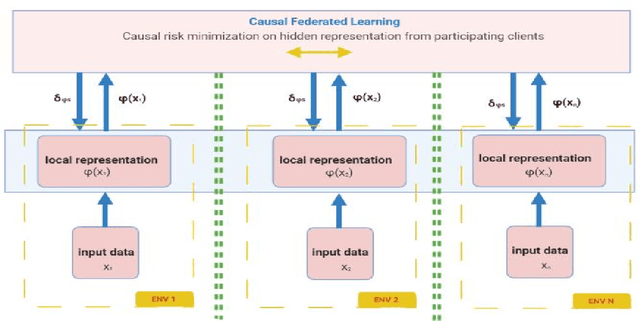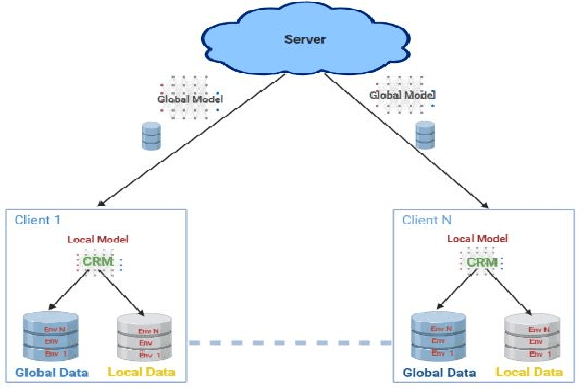Sreya Francis
Gradient Masked Federated Optimization
Apr 21, 2021



Abstract:Federated Averaging (FedAVG) has become the most popular federated learning algorithm due to its simplicity and low communication overhead. We use simple examples to show that FedAVG has the tendency to sew together the optima across the participating clients. These sewed optima exhibit poor generalization when used on a new client with new data distribution. Inspired by the invariance principles in (Arjovsky et al., 2019; Parascandolo et al., 2020), we focus on learning a model that is locally optimal across the different clients simultaneously. We propose a modification to FedAVG algorithm to include masked gradients (AND-mask from (Parascandolo et al., 2020)) across the clients and uses them to carry out an additional server model update. We show that this algorithm achieves better accuracy (out-of-distribution) than FedAVG, especially when the data is non-identically distributed across clients.
Towards Causal Federated Learning For Enhanced Robustness and Privacy
Apr 14, 2021


Abstract:Federated Learning is an emerging privacy-preserving distributed machine learning approach to building a shared model by performing distributed training locally on participating devices (clients) and aggregating the local models into a global one. As this approach prevents data collection and aggregation, it helps in reducing associated privacy risks to a great extent. However, the data samples across all participating clients are usually not independent and identically distributed (non-iid), and Out of Distribution(OOD) generalization for the learned models can be poor. Besides this challenge, federated learning also remains vulnerable to various attacks on security wherein a few malicious participating entities work towards inserting backdoors, degrading the generated aggregated model as well as inferring the data owned by participating entities. In this paper, we propose an approach for learning invariant (causal) features common to all participating clients in a federated learning setup and analyze empirically how it enhances the Out of Distribution (OOD) accuracy as well as the privacy of the final learned model.
 Add to Chrome
Add to Chrome Add to Firefox
Add to Firefox Add to Edge
Add to Edge